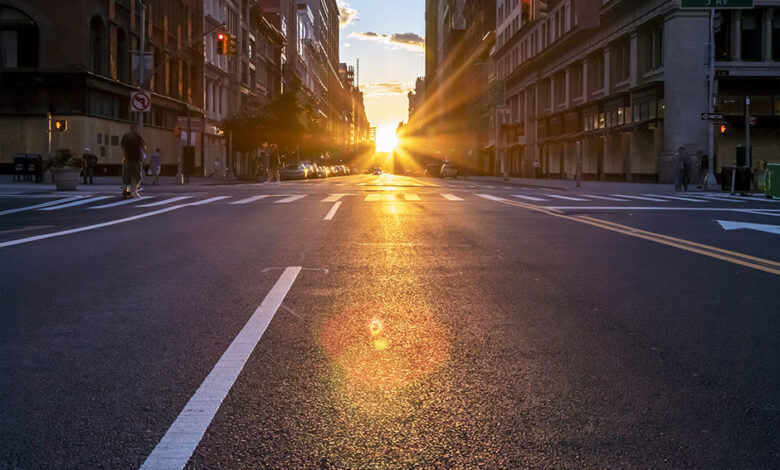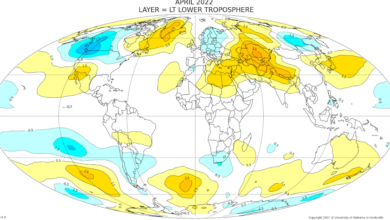New York Zero Emission Vehicle Mandate – Watts Up With That?

From the Pragmatic Environmentalist of New York
Roger Caiazza
The Climate Leadership and Community Protection Act (Climate Act) has a legal mandate for New York State greenhouse gas emissions to meet the ambitious net-zero goal by 2050. On September 29, 2022 Governor Hochul directed the New York Department of Environmental Conservation to take major regulatory action that will require all new passenger cars, pickup trucks, and SUVs sold in New York State to be zero emissions by 2035. As has been the case with all of the Administration’s global warming regulatory initiatives the pronouncement is not supported by any documentation.
Everyone wants to do right by the environment to the extent that they can afford to and not be unduly burdened by the effects of environmental policies. I submitted comments on the Climate Act implementation plan and have written extensively on New York’s net-zero transition because I believe the ambitions for a zero-emissions economy embodied in the Climate Act outstrip available renewable technology such that this supposed cure will be worse than the disease. The opinions expressed in this post do not reflect the position of any of my previous employers or any other company I have been associated with, these comments are mine alone.
Climate Act Background
The Climate Act establishes a “Net Zero” target (85% reduction and 15% offset of emissions) by 2050. The Climate Action Council is responsible for preparing the Scoping Plan that will “achieve the State’s bold clean energy and climate agenda”. They were assisted by Advisory Panels who developed and presented strategies to the meet the goals to the Council. Those strategies were used to develop the integration analysis prepared by the New York State Energy Research and Development Authority (NYSERDA) and its consultants that tried to quantify the impact of the strategies. That material was used to write a Draft Scoping Plan that was released for public comment at the end of 2021. The Climate Action Council states that it will revise the Draft Scoping Plan based on comments and other expert input in 2022 with the goal to finalize the Scoping Plan by the end of the year.
In 2019 greenhouse gas (GHG) emissions from the transportation sector accounted for 28.2% of total GHG emissions so it is necessary to reduce transportation sector emissions to meet the Climate Act targets. However, I explained in my comments that the Draft Scoping Plan did a poor job evaluating how a zero-emissions mandate would be implemented and an even worse job projecting the potential costs. I will highlight some of the points made in my comments and also put this new mandate in context.
Hochul’s Announcement
The following is a substantial portion of the press release announcing the mandate:
Governor Kathy Hochul today commemorated National Drive Electric Week by directing the State Department of Environmental Conservation to take major regulatory action that will require all new passenger cars, pickup trucks, and SUVs sold in New York State to be zero emissions by 2035. This is a crucial regulatory step to achieving significant greenhouse gas emission reductions from the transportation sector and is complemented by new and ongoing investments also announced today, including electric vehicle infrastructure progress, zero-emission vehicle incentives, and ensuring New York’s communities benefit from historic federal climate change investments.
“New York is a national climate leader and an economic powerhouse, and we’re using our strength to help spur innovation and implementation of zero-emission vehicles on a grand scale,” Governor Hochul said. “With sustained state and federal investments, our actions are incentivizing New Yorkers, local governments, and businesses to make the transition to electric vehicles. We’re driving New York’s transition to clean transportation forward, and today’s announcement will benefit our climate and the health of our communities for generations to come.”
Proposing draft State regulations is a crucial step to further electrify the transportation sector and help New York achieve its climate requirement of reducing greenhouse gases 85 percent by 2050, while also reducing air pollution, particularly in disadvantaged communities. The State Department of Environmental Conservation (DEC) is expediting this regulatory process to implement legislation Governor Hochul signed last year and turn those goals into progress in fully transitioning to new zero-emission cars and trucks. California’s action finalizing the Advanced Clean Cars II regulation last month unlocked New York’s ability to adopt the same regulation.
The regulation will build upon existing regulations enacted in New York in 2012 by requiring all new sales of passenger cars, pickup trucks, and SUVs to be zero-emission by 2035. It would require an increasing percentage of new light-duty vehicle sales to be zero-emission vehicles (ZEV) starting with 35 percent of sales in model year 2026, 68 percent of sales by 2030, and 100 percent of sales by 2035. New pollutant standards for model year 2026 through model year 2034 passenger cars, light-duty trucks, and medium-duty vehicles with internal combustion engines would also be required. The regulation provides manufacturers with flexibility in meeting the emission requirements and achieving a successful transition to cleaner vehicles.
Adoption of Advanced Clean Cars II is included among the recommendations in the Climate Action Council’s Draft Scoping Plan and will be instrumental in achieving the greenhouse gas emissions reductions required in the Climate Leadership and Community Protection Act. In addition, reducing emissions will provide significant air quality benefits to many of New York’s disadvantaged communities, predominantly home to low-income Black, Indigenous, and People of Color, and often adjacent to transit routes with heavy vehicle traffic. The regulation will help address disproportionate risks and health and pollution burdens affecting these communities.
Department of Environmental Conservation Commissioner and Climate Action Council Co-Chair Basil Seggos said, “Governor Hochul is demonstrating her sustained commitment to the successful implementation of the Climate Act and ensuring all New Yorkers benefit from the State’s actions to address climate change. DEC will continue to work under her direction to rapidly issue this regulation and reach another milestone in the transition from fossil fuels so that more people, businesses, and governments will have the ZEV options to meet their needs and help improve the health of their communities.”
The directed regulatory action announced today builds on New York’s ongoing efforts to reduce emissions of greenhouse gases, including the adoption of the Advanced Clean Trucks regulation in December 2021. That regulation will drive an increase in the number of medium- and heavy-duty ZEV models available as purchase options for vehicle purchasers and fleets. In addition, several transit agencies including the Niagara Frontier Transportation Authority, the Rochester-Genesee Regional Transportation Authority, and the Metropolitan Transit Authority are leading by example with second wave deployments of electric buses. DEC, New York State Energy Research and Development Authority (NYSERDA), New York Power Authority (NYPA), and DOT (Department of Transportation) are assisting these authorities with these efforts.
Draft Scoping Plan Transportation Comments
I submitted a couple of comments on electric vehicles. The emphasis in the first comment was my finding that the Integration Analysis is simply making assumptions about future zero-emissions transportation implementation strategies without providing adequate referenced documentation. I provided numerous recommendations for additional documentation in these comments so that New Yorkers can understand what will be expected and how much it will cost.
As far as I can tell, the electric vehicle costs are based entirely on new vehicle sales. There is no acknowledgement that the used car market will likely change because of the cost of battery replacement. Sellers will likely get less relative to new cars in the battery electric vehicle market. Buyers may get a relative deal but will lose in the end when the batteries have to be replaced. This is a particular concern for low and middle-income citizens who cannot afford new vehicles.
There is no bigger disconnect between the zero-emission vehicle (ZEV) proposed strategy and reality than the ZEV charging infrastructure requirements. The biggest problem is that millions of cars will have to rely on chargers that cannot be dedicated for the owner’s personal use because the owners park on the street or in a parking lot. In order to provide a credible ZEV strategy, the final Scoping Plan has to describe a plan how this could possibly work. It is not enough to simply say it will work.
I also submitted a comment addressing electric vehicle costs. the Integration Analysis vehicle cost projections rely on a single vehicle type for light-duty vehicles. As a result, the projections are not particularly useful for many vehicle owners. In order to accurately project the costs for this mandate the types of vehicles used has to be updated.
Discussion
There is a paragraph in the press release that needs to be addressed:
The regulation will build upon existing regulations enacted in New York in 2012 by requiring all new sales of passenger cars, pickup trucks, and SUVs to be zero-emission by 2035. It would require an increasing percentage of new light-duty vehicle sales to be zero-emission vehicles (ZEV) starting with 35 percent of sales in model year 2026, 68 percent of sales by 2030, and 100 percent of sales by 2035. New pollutant standards for model year 2026 through model year 2034 passenger cars, light-duty trucks, and medium-duty vehicles with internal combustion engines would also be required. The regulation provides manufacturers with flexibility in meeting the emission requirements and achieving a successful transition to cleaner vehicles.
In 2026 the State will require 35% of all new vehicle sales to be zero-emission vehicles. As of May 1, 2022 there were a little over 62,000 electric cars registered in New York out of the over 11 million vehicles registered. The Integration Analysis projections for battery electric vehicles in 2026 range from 7.8% in the reference case to 24.3% in the most optimistic mitigation scenarios. One of my criticisms of the Draft Scoping Plan is that the increase in projected sales is not supported by any recommendations for implementation.
I have documented many electric vehicles issues but it is by no means an exhaustive list of the reasons I will never purchase an electric vehicle. The State apparently believes that all that is necessary is a proclamation and all the reservations of all the people who are perfectly happy with internal combustion engines will be overcome.
Hochul’s proclamation fails to address the low and middle-income consumer concerns expressed by Robert Bryce in testimony before the House Select Committee on the Climate Crisis:
EVs … impose … societal costs that are likely to exacerbate inequality and lead to more energy poverty,” Bryce continued. “Those costs include taxpayer-funded subsidies given to EV buyers, publicly funded charging stations, and the grid upgrades that will be needed to support the electrification of light and heavy-duty vehicles. Those costs will impose a significant cost burden on low and middle-income consumers, even though those consumers are unlikely to purchase EVs.
Bryce also raised other issues in his testimony that are ignored in the grandstanding announcement:
Electrifying parts of our transportation system may result in incremental reductions in greenhouse gas emissions, but a look at history, as well as an analysis of the supply-chain issues involved in manufacturing EVs, the resource intensity of batteries, and the increasingly fragile state of our electric grid – which is being destabilized by bad policy at the state and national levels – shows that a headlong drive to convert our transportation systems to run on ‘green’ electricity could cost taxpayers untold billions of dollars, increase greenhouse gas emissions, be bad for societal resilience, make the U.S. more dependent on commodity markets dominated by China, make us less able to respond to extreme weather events or attacks on our infrastructure, and impose regressive taxes on low and middle-income Americans in the form of higher electricity prices.
Finally, the ultimate rationale for this inane policy is to do something about climate change. The reality is that New York emissions are inconsequential so this is nothing more than politically expedient climate virtue signaling. New York’s GHG emissions are less than one half a percent of total global emissions and, on average, global GHG emissions have been increasing by more than one half a percent per year. Anything we do will be wiped out be emissions elsewhere in a year. Furthermore, the State has never published an estimate of the effect of New York emission reductions on global warming itself. I estimate that the change to global warming from eliminating New York GHG emissions is only 0.01°C by the year 2100 which is too small to be measured much less have an effect on any of the purported damages of greenhouse gas emissions.
Conclusion
In the press release Hochul claimed that “New York is a national climate leader and an economic powerhouse, and we’re using our strength to help spur innovation and implementation of zero-emission vehicles on a grand scale”. The State’s obsession with being a climate leader is pointless. Worse there is no recognition that the pursuit of zero emissions has unintended consequences and will likely cause more harm than good. The lack of a public discussion of pragmatic considerations for the net-zero transition will ultimately seriously affect New York.
Author: rogercaiazza
I am a meteorologist (BS and MS degrees), was certified as a consulting meteorologist and have worked in the air quality industry for over 40 years. I author two blogs. Environmental staff in any industry have to be pragmatic balancing risks and benefits and (https://pragmaticenvironmentalistofnewyork.blog/) reflects that outlook. The second blog addresses the New York State Reforming the Energy Vision initiative (https://reformingtheenergyvisioninconvenienttruths.wordpress.com). Any of my comments on the web or posts on my blogs are my opinion only. In no way do they reflect the position of any of my past employers or any company I was associated with. View all posts by rogercaiazza




